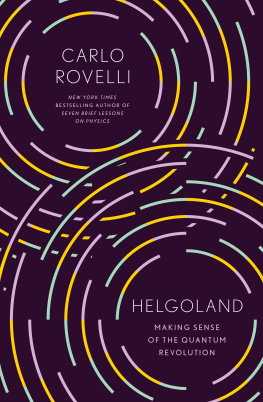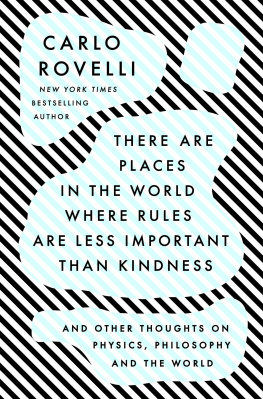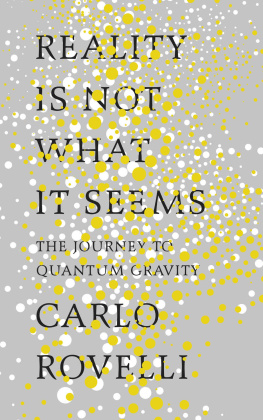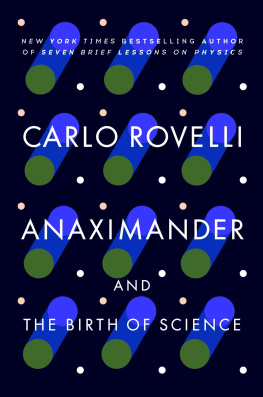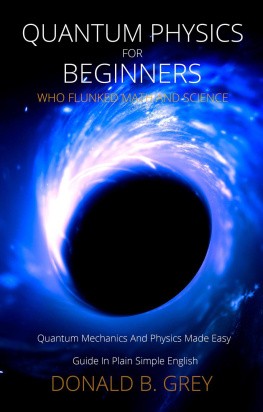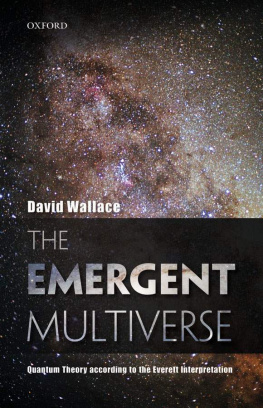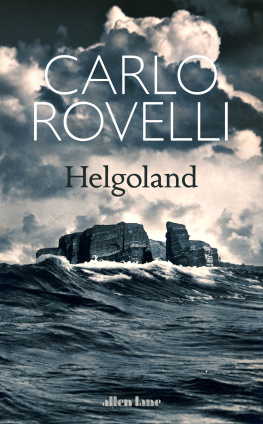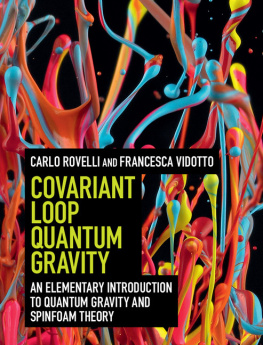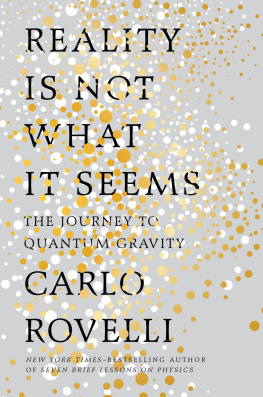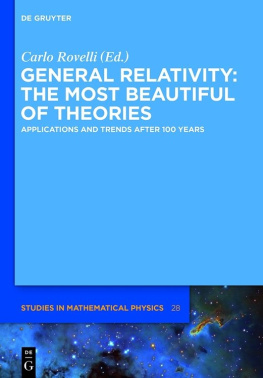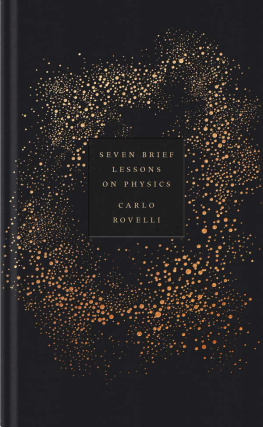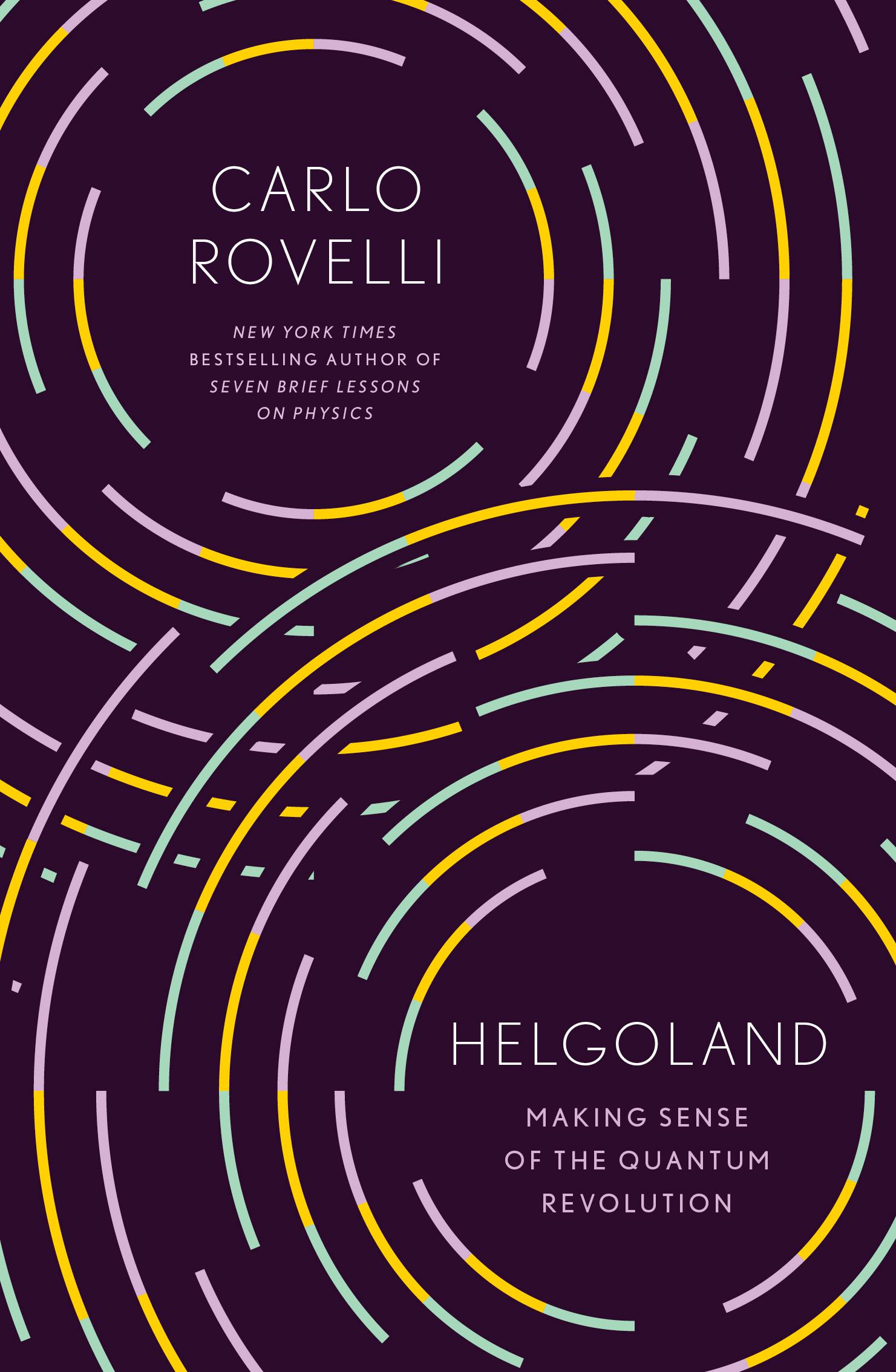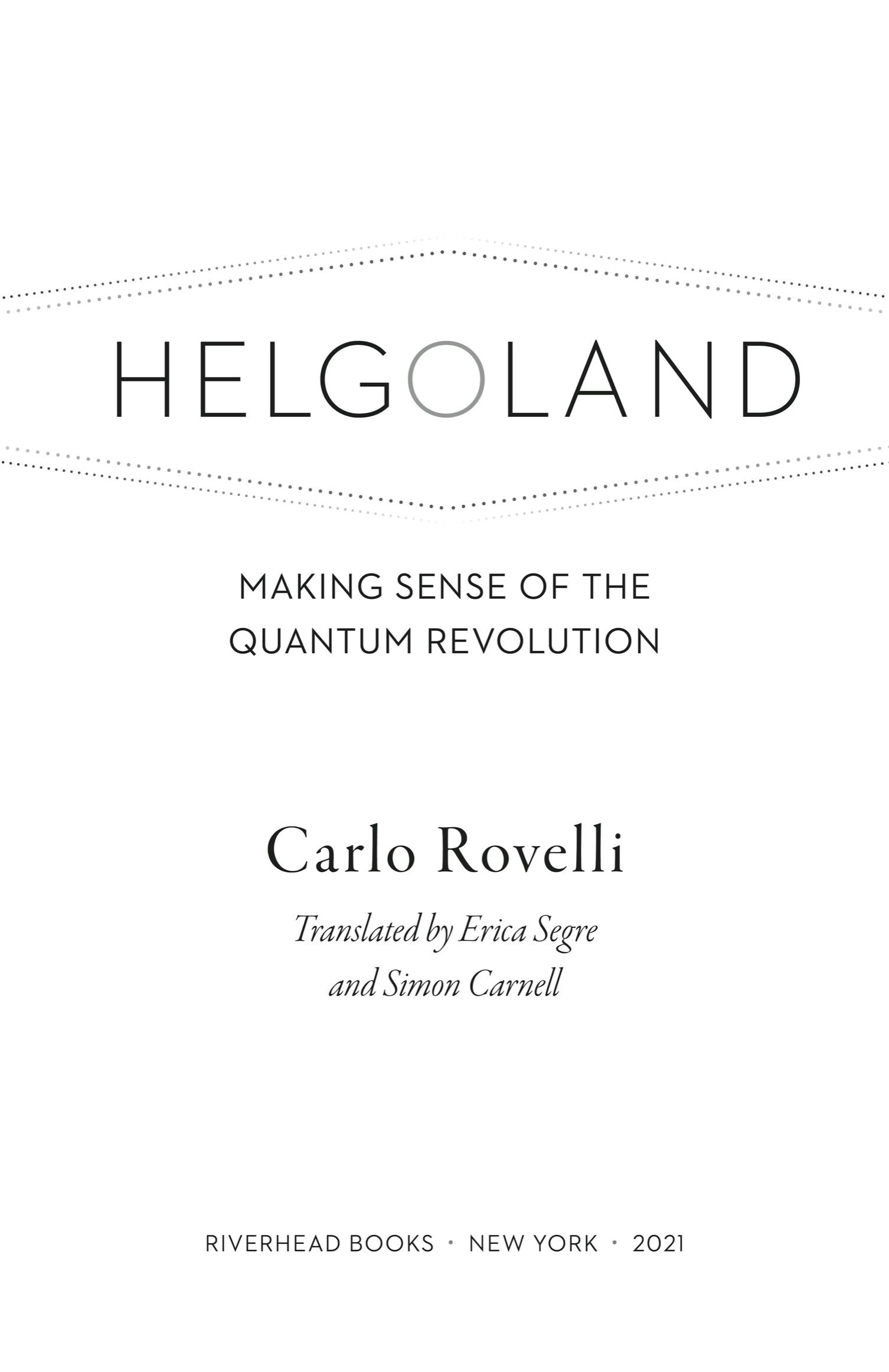ALSO BY CARLO ROVELLI
The Order of Time
Reality Is Not What It Seems: The Journey to Quantum Gravity
Seven Brief Lessons on Physics
The First Scientist: Anaximander and His Legacy

RIVERHEAD BOOKS
An imprint of Penguin Random House LLC
penguinrandomhouse.com
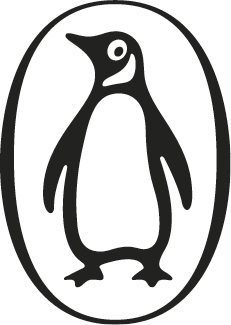
Copyright 2020 by Adelphi Edizioni, SpA
Translation copyright 2021 by Erica Segre and Simon Carnell
Originally published in Italy as Helgoland by Adelphi Edizioni, Milan, in 2020.
First published in English in Great Britain by Allen Lane, an imprint of Penguin Random House Ltd., London, in 2021.
First North American edition published by Riverhead Books, 2021.
Penguin supports copyright. Copyright fuels creativity, encourages diverse voices, promotes free speech, and creates a vibrant culture. Thank you for buying an authorized edition of this book and for complying with copyright laws by not reproducing, scanning, or distributing any part of it in any form without permission. You are supporting writers and allowing Penguin to continue to publish books for every reader.
Riverhead and the R colophon are registered trademarks of Penguin Random House LLC.
constitutes an extension of this copyright page.
Library of Congress Cataloging-in-Publication Data
Names: Rovelli, Carlo, 1956 author. | Segre, Erica, translator. | Carnell, Simon, 1962 translator.
Title: Helgoland : making sense of the quantum revolution / Carlo Rovelli ; translated by Erica Segre and Simon Carnell.
Other titles: Helgoland. English
Description: First U.S. hardcover. | New York : Riverhead Books, 2021. | Originally published in Italian under the title Helgoland by Adelphi Edizioni, Milan, in 2020Title page verso. | Includes bibliographical references and index.
Identifiers: LCCN 2020049573 (print) | LCCN 2020049574 (ebook) | ISBN 9780593328880 (hardcover) | ISBN 9780593328903 (ebook)
Subjects: LCSH: Quantum theory.
Classification: LCC QC173.96 .R6813 2021 (print) | LCC QC173.96 (ebook) | DDC 530.12dc23
LC record available at https://lccn.loc.gov/2020049573
LC ebook record available at https://lccn.loc.gov/2020049574
Book design by Amanda Dewey, adapted for ebook by Maggie Hunt
Cover design: Jason Booher
pid_prh_5.7.0_c0_r0
To Ted Newman, who made me understand that I did not understand quantum theory
LOOKING INTO THE ABYSS
aslav and I are sitting on the sand a few steps from the shore. We have been talking intensely for hours. We came to the island of Lamma, across from Hong Kong, during the afternoon break of a conference. aslav is a world-renowned expert on quantum mechanics. At the conference, he presented an analysis of a complex thought experiment. We discussed and rediscussed the experiment on the path through the coastal jungle leading to the shore, and then here, by the sea. We have ended up basically agreeing. On the beach there is a long silence. We watch the sea. Its really incredible, aslav whispers. Can this be believed? Its as if reality... didnt exist...
This is the stage we are at with quanta. After a century of resounding triumphs, having gifted us contemporary technology and the very basis for twentieth-century physics, the theory that is one of the greatest achievements of science fills us with astonishment, confusion and disbelief.
There was a moment when the grammar of the world seemed clear: at the root of the variegated forms of reality, just particles of matter guided by a few forces. Humankind could think that it had raised the Veil of Maya, seen the basis of the real. It didnt last. Many facts did not fit. Until, in the summer of 1925, a twenty-three-year-old German spent days of anxious solitude on a windswept island in the North Sea: Helgolandin English also Heligolandthe Sacred Island. There, on the island, he found the idea that made it possible to account for all recalcitrant facts, to build the mathematical structure of quantum mechanics, quantum theory. Perhaps the most impressive scientific revolution of all time. The name of the young man was Werner Heisenberg, and the story told in this book begins with him.
Quantum theory has clarified the foundations of chemistry, the functioning of atoms, of solids, of plasmas, of the color of the sky, the dynamics of the stars, the origins of galaxies... a thousand aspects of the world. It is at the basis of the latest technologies: from computers to nuclear power. Engineers, astrophysicists, cosmologists, chemists and biologists all use it daily; the rudiments of the theory are included in high school curricula. It has never been wrong. It is the beating heart of todays science. Yet it remains profoundly mysterious, subtly disturbing.
It has destroyed the image of reality as made up of particles that move along defined trajectorieswithout, however, clarifying how we should think of the world instead. Its mathematics does not describe reality. Distant objects seem magically connected. Matter is replaced by ghostly waves of probability.
Whoever stops to ask themselves what quantum theory has to say about the actual world remains perplexed. Albert Einstein, even though he had anticipated ideas that put Heisenberg on the right track, could never digest it himself. Richard Feynman, the great theoretical physicist of the second half of the twentieth century, wrote that nobody understands quanta.
But this is what science is all about: exploring new ways of conceptualizing the world. At times, radically new. It is the capacity to constantly call our concepts into question. The visionary force of a rebellious, critical spirit, capable of modifying its own conceptual basis, capable of redesigning our world from scratch.
If the strangeness of quantum theory confuses us, it also opens new perspectives with which to understand reality. A reality that is more subtle than the simplistic materialism of particles in space. A reality made up of relations rather than objects.
The theory suggests new directions in which to rethink great questions, from the structure of reality to the nature of experience, from metaphysics to perhaps even the very nature of consciousness. Today this is all a matter of the liveliest debate among scientists and among philosophers. I speak about it all in the following pages.
On the island of Helgolandbarren, extreme, battered by the winds of the northWerner Heisenberg lifted a veil. An abyss opened. The story that this book has to tell starts from the island where Heisenberg conceived the germ of his idea, and progressively widens to take in ever bigger questions opened by the discovery of the quantum structure of reality.

